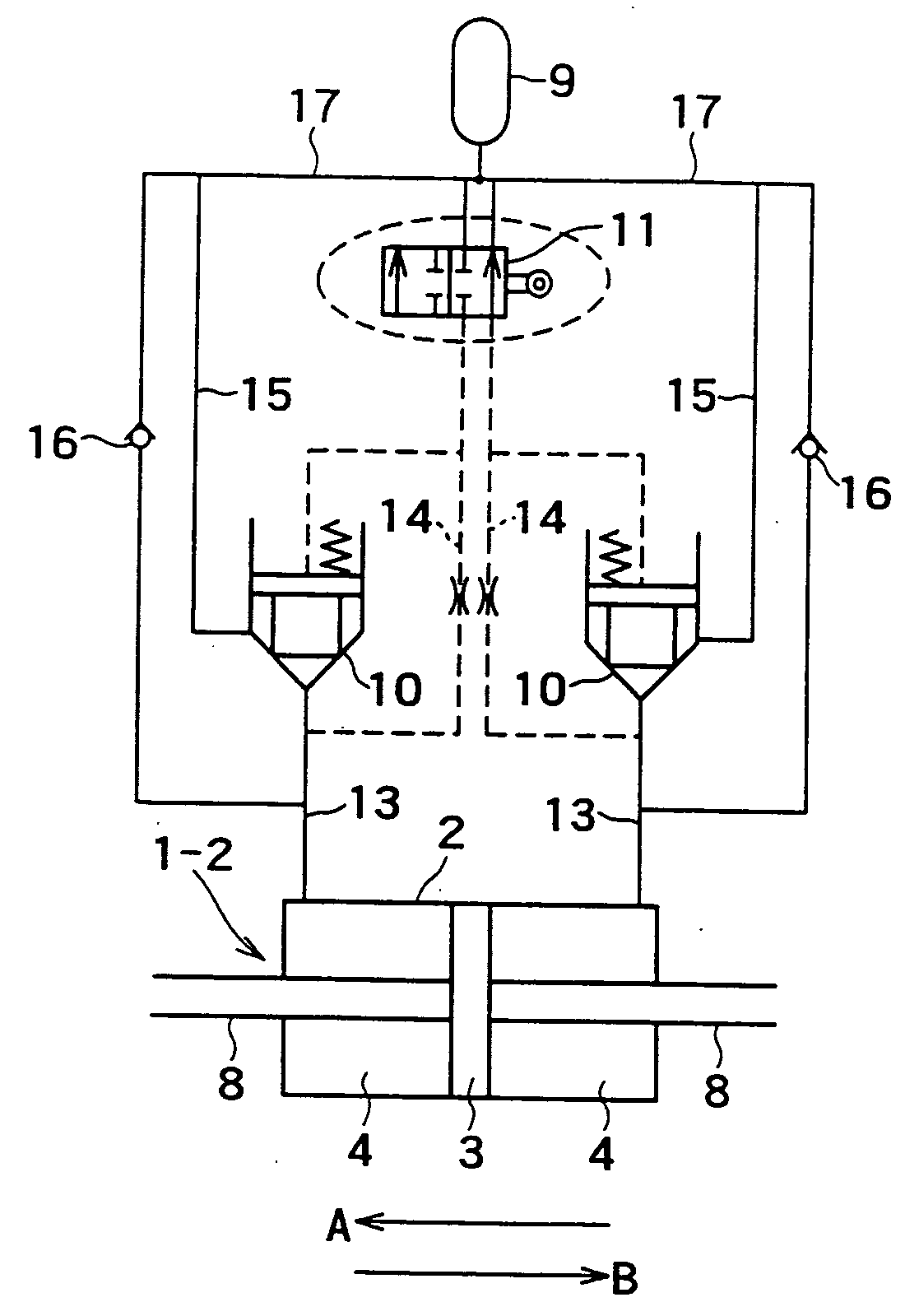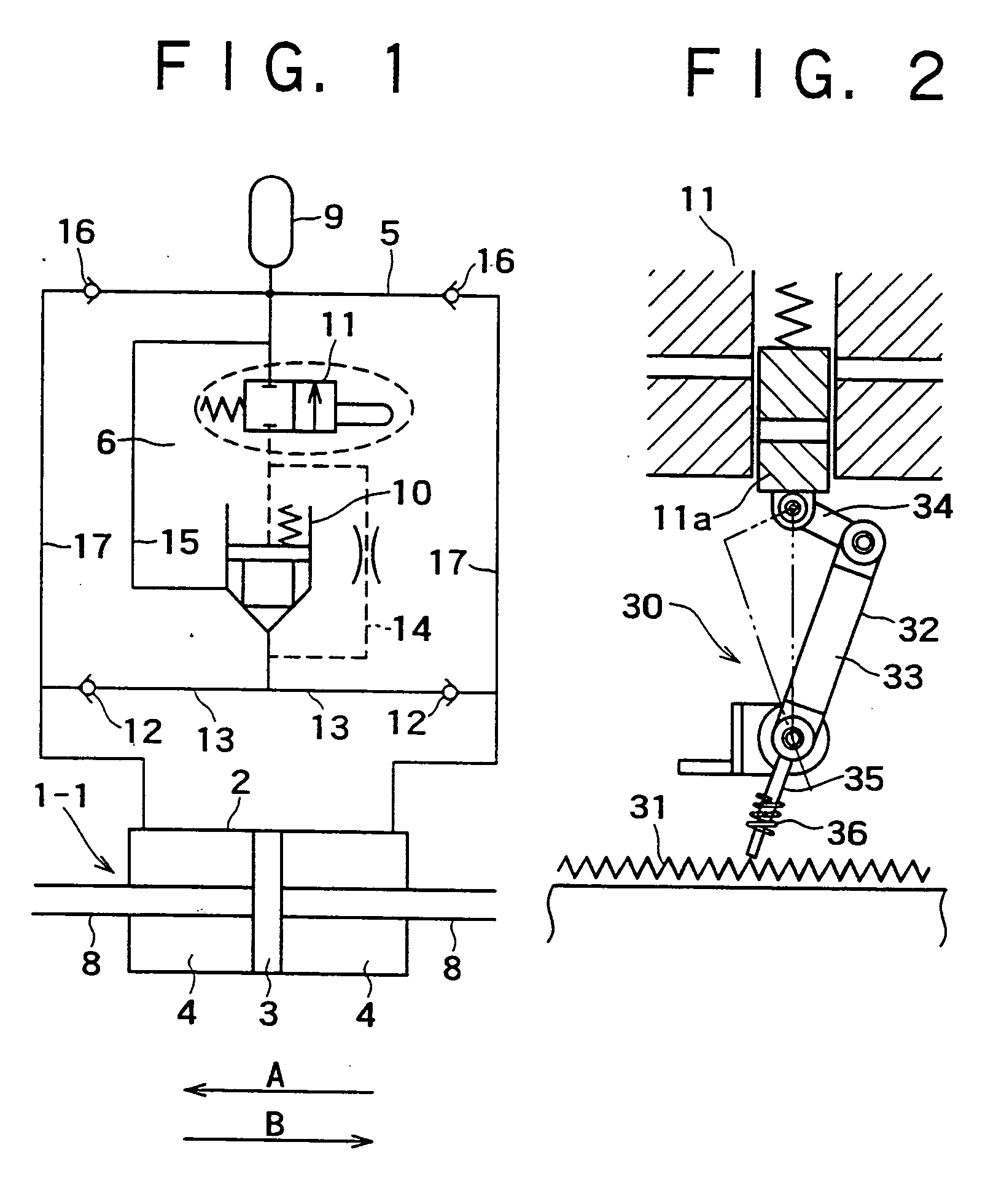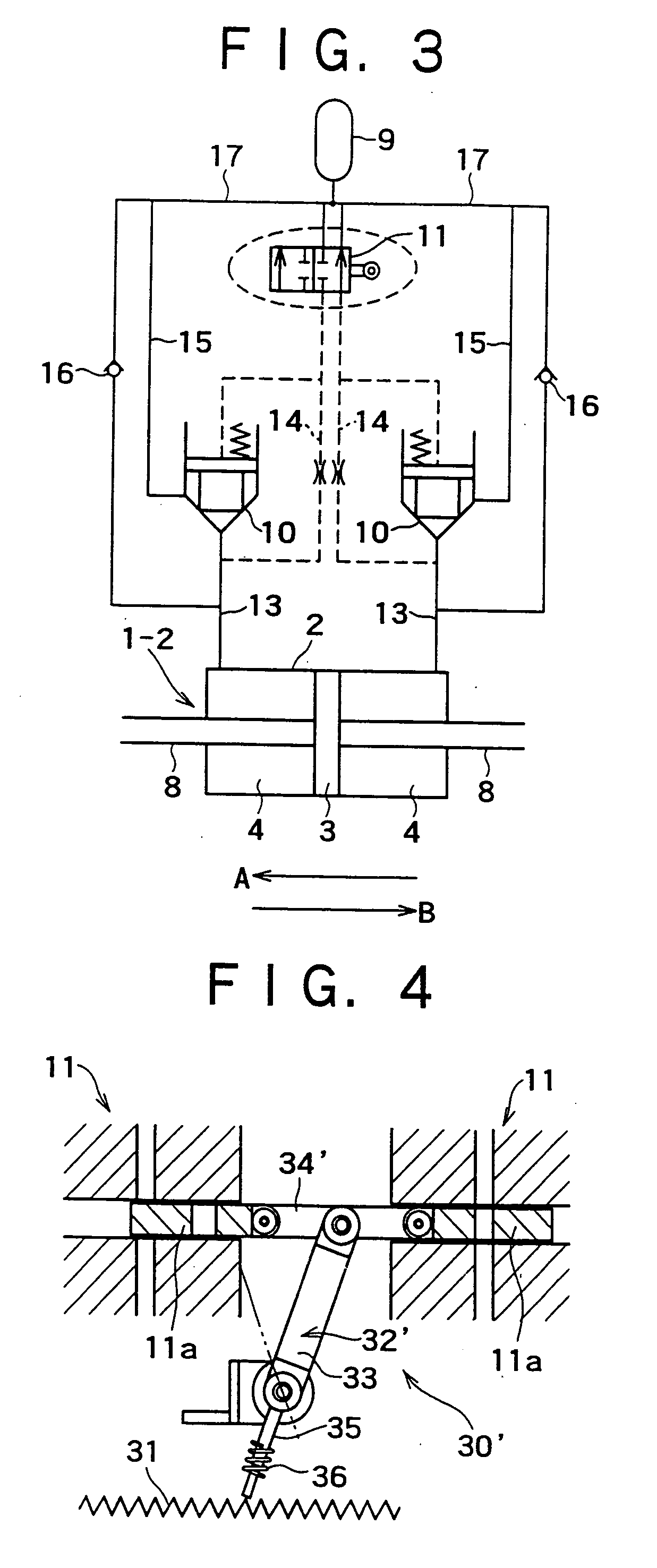Attenuation coefficient switching type hydraulic damper
- Summary
- Abstract
- Description
- Claims
- Application Information
AI Technical Summary
Benefits of technology
Problems solved by technology
Method used
Image
Examples
first embodiment
[0057] In thus-structured hydraulic damper 1, the first embodiment employs a mechanical drive means 30, as shown in FIG. 2, to allow the damping coefficient of the hydraulic damper 1 to be switched in two stages, that is, between the maximum value Cmax and the minimum value Cmin only with the hydraulic damper 1 that works in response to an external force.
[0058] The mechanical drive means 30 is composed of, for instance, a straight gear (rack) 31 fixed to a piston rod 8 and a crank mechanism 32 that works with the straight gear 31 to on-off control the on-off control operation valve 11. The crank mechanism 32 is structured so that a base part of a first link 33 is fixed to a cylinder side through a pin or the like to make the crank mechanism swing-able in a direction of movement of the piston, and a tip end of a second link 34 is connected to a valve body 11a of a spool or the like of the on-off control operation valve 11 through a pin or the like.
[0059] In addition, the first link ...
second embodiment
[0081] In the case of the above second embodiment, it is also noted that the mere use of the on-off control operation valve 11 is enough to perform switching of the damping coefficient without using the flow regulating valve 10, when the flow rate is not so high.
[0082] [III] Hydraulic Type of Damping Coefficient Switching-Type Hydraulic Damper (of Single Valve and Two Drive Part Type) 1-3
[0083] As shown in FIG. 5, in place of the mechanical drive means 30 of FIG. 1, a hydraulic drive means 40 is incorporated in the hydraulic circuit of FIG. 1 to perform switching of the damping coefficient with a change of hydraulic pressure.
[0084] The hydraulic drive means 40 is composed of a buffer 42 connected to each of inflow passages 17, 17 of the hydraulic chambers 4,4 through restrictions respectively and being used for storing pressure oil, and a selector valve (poppet valve) 43 connected to the buffer 42 and being used to on-off control the on-off control operation valve 11.
[0085] The s...
third embodiment
[0092] Although there are provided two on-off control operation valves 11, it is noted that the use of the single on-off control operation valve will do. In the case of the above third embodiment, it is also noted that the mere use of the on-off control operation valve 11 is enough to perform switching of the damping coefficient without using the flow regulating valve 10, when the flow rate is not so high.
[0093] [IV] Hydraulic-Type Damping Coefficient Switching-Type Hydraulic Damper (of Two Valve and Two Drive Part Type) 1-4
[0094] As shown in FIG. 6, this embodiment is that employing two flow regulating valves 10 arranged as right- and left-side flow regulating valves in the hydraulic circuit of FIG. 5. This embodiment is similar in other constitution to that of FIG. 5.
[0095] The hydraulic type of damping coefficient switching-type hydraulic damper 1-4 having the above structure operates as follows, like that of FIG. 5, except that the hydraulic damper 1-4 employs two flow regulat...
PUM
 Login to View More
Login to View More Abstract
Description
Claims
Application Information
 Login to View More
Login to View More - R&D
- Intellectual Property
- Life Sciences
- Materials
- Tech Scout
- Unparalleled Data Quality
- Higher Quality Content
- 60% Fewer Hallucinations
Browse by: Latest US Patents, China's latest patents, Technical Efficacy Thesaurus, Application Domain, Technology Topic, Popular Technical Reports.
© 2025 PatSnap. All rights reserved.Legal|Privacy policy|Modern Slavery Act Transparency Statement|Sitemap|About US| Contact US: help@patsnap.com



